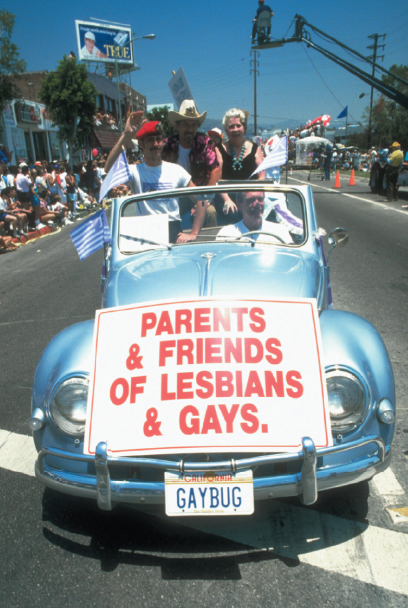The Gay and Lesbian Rights Movement
Printed Page 920
Section Chronology
In contrast to feminism and other social movements, gay and lesbian rights activism grew during the 1980s, galvanized in part by the discovery in 1981 of a devastating disease, acquired immune deficiency syndrome (AIDS). Because initially the disease disproportionately affected male homosexuals in the United States, activists mobilized to promote public funding for AIDS education, prevention, and treatment.

The gay and lesbian rights movement helped closeted homosexuals “come out,” and their visibility increased awareness, if not always acceptance, of homosexuality among the larger population. Beginning with the election of Elaine Noble to the Massachusetts legislature in 1974, several openly gay politicians won offices ranging from mayor to member of Congress, and the Democrats began to include gay rights in their party platforms. Activists organized gay rights marches throughout the country.
Popular attitudes about homosexuality moved toward greater tolerance but remained complex, leading to uneven changes in policies. Dozens of cities banned job discrimination against homosexuals, and beginning with Wisconsin in 1982, eleven states made sexual orientation a protected category under civil rights laws. Local governments and large corporations began to offer health insurance and other benefits to same-sex domestic partners.
Yet a strong countermovement challenged the drive for gay rights. The Christian Right targeted gays and lesbians as symbols of national immorality, and they succeeded in overturning some homosexual rights measures. Many states removed antisodomy laws from the books, but in 1986 the Supreme Court upheld the constitutionality of such laws. Until the Court reversed that opinion in 2003, more than a dozen states retained statutes that left homosexuals vulnerable to criminal charges for private consensual behavior.
QUICK REVIEW
Question
9L+qONby0CX2IDk4kP1eBAXUzfreO5wDDDEMu3w1APVLGakuJ4+HIG5C8J5Hm0jNCMbjM1n+Vr7dfstBAv7ST1MvZtgCiJO/q6FVmfXEcny/Lqw5vg6ojuSR9qsY194Oq+tTGAqxoiBTs/f/GN/R/3UsR+etBmg5l3rdiZfdjbnkigRrLDIZdzXchAAX+qtkuk0P1t+CddEHEbSRiJI7n8TdO87QSUKG+VsakXxj3bGr5F5lm4YpQlJFuBs=CHAPTER LOCATOR
How did the Nixon presidency reflect the rise of postwar conservatism?
Why did the “outsider” presidency of Jimmy Carter fail to gain broad support?
What conservative goals were realized in the Reagan administration?
What strategies did liberals use to fight the conservative turn?
How did Ronald Reagan’s foreign policy affect the Cold War?
Conclusion: What was the long-term impact of the conservative turn?
 LearningCurve
LearningCurve
Check what you know.